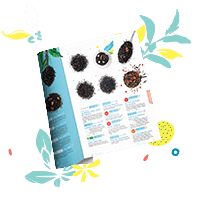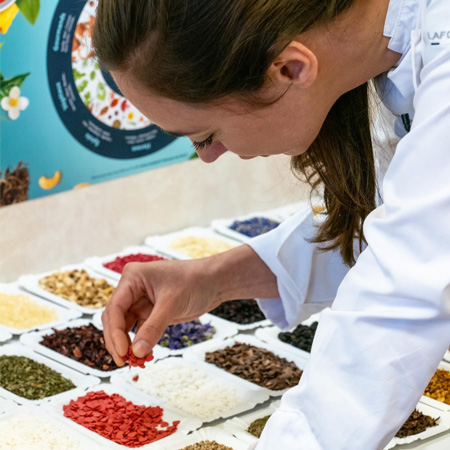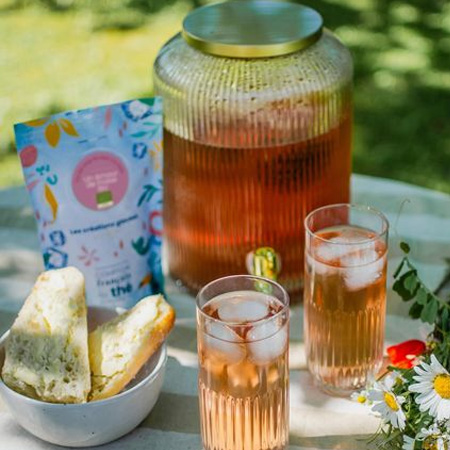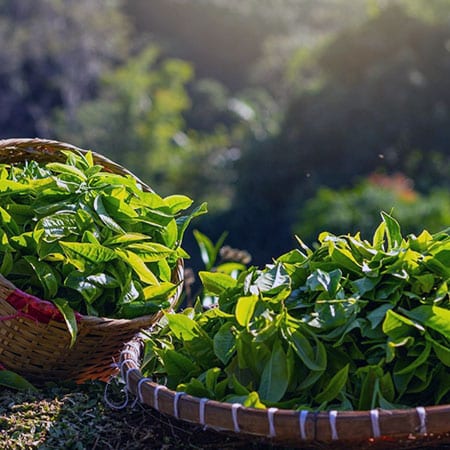The life of tea
To live tea as a moment between brackets, to gather for it and around it, to be passionate about the search for the innumerable variety of gustatory notes, to discover the periods of overtaste, to savour the new flavoured creations, to know the terroirs…
The producing countries
The Island of Ceylon – Ceylon black tea
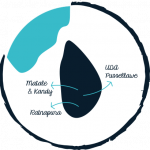
The third largest producer in the world, Sri Lanka, nicknamed the island of tea, supplies more than half of the black teas consumed in France.
Ceylon, a magnificent island, a magical name, where everyone knows there is tea… but many are unaware of the great diversity of teas produced, with a wide range of flavours.
Ceylon is the only country where tea is harvested all year round.
India – Indian black tea
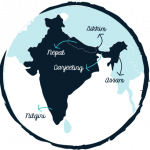
Teas from India are very different from each other. On the one hand, because from one region to another, the climatic conditions and the relief are very different: mountainous regions, plateaus, plains, and on the other hand, because the plantations are not all made up of the same types of tea bushes
Japan – Green tea from Japan
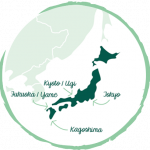
The main families of teas are classified essentially according to their method of cultivation, according to the exposure of the tea bushes to the sun, before plucking.
The teas are all classified according to their production method, i.e. whether they were grown in full sun, which is the Sencha method, or whether they were covered before harvesting, which is the Gyokuro method.
China – Green tea from China
The varieties of tea from China are almost endless!
Traditionally, Chinese teas are named after the shape of the tea leaves used: Chun Mee tea, for example, means “old man’s eyebrow”. The best known Chinese variety is gunpowder tea, which has become popular thanks to the famous mint tea.
The main families of teas are classified essentially according to their method of cultivation, according to the exposure of the tea bushes to the sun, before plucking.
The teas are all classified according to their production method, i.e. whether they were grown in full sun, which is the Sencha method, or whether they were covered before harvesting, which is the Gyokuro method.
China – Black tea from China
The cradle of tea and the world’s leading producer until the 19th century, China is now second only to India in terms of production.
Not only are there more tea gardens in China than there are wines in France, but all tea families are represented.
Tea grades
Find below the classification of black tea.
Regarding green teas, the names of the different forms of green tea vary according to the country of production, the national or even regional names and the manufacturing methods.
This is because the green tea producing countries have never been subject to English influence. They therefore do not follow the classification known in other countries.
| Les thés à grandes feuilles | |
|---|---|
| O.P. | Orange Pekoe : 20 à 30 mm |
| F.O.P. | Flowery Orange Pekoe : entre 8 et 15 mm |
| G.F.O.P. | Golden Flowery Orange Pekoe |
| T.G.F.O.P. | Tippy Golden Flowery Orange Pekoe |
| F.T.G.F.O.P. | Finest Tippy Golden Flowery Orange Pekoe |
| F.T.G.F.O.P.1 | Finest Tippy Golden Flowery Orange Pekoe One |
| S.F.T.G.F.O.P. | Special Finest Tippy Golden Flowery Orange Pekoe |
| P | Pekoe |
| P.S. | Pekoe Souchong |
| S | Souchong |
| Les thés à petites feuilles | |
|---|---|
| B.O.P. | Broken Orange Pekoe : 1.5mm à 2mm |
| F.B.O.P. | Flowery Broken Orange Pekoe |
| G.B.O.P. | Golden Broken Orange Pekoe |
| G.F.B.O.P. | Golden Flowery Broken Orange Pekoe |
| T.G.B.O.P. | Tippy Golden Broken Orange Pekoe |
| B.P.S. | Broken Pekoe Souchong |
The preparation of tea
MEASURING TEA
This is a difficult question to answer, as the capacity of cups and teapots varies. On average, we recommend using one heaping teaspoon (2g) for a cup of about 25/30cl.
TEMPERATURE & BREWING TIME
Our teas and infusions require quality water. Ideally, spring water or filtered water
| Thés noirs | 95°C | Grandes feuilles | 3 à 5 min |
| Petites feuilles | 3 à 4 min | ||
| Aromatisés | 4 à 5 min | ||
| Thés verts | 75°C | Natures | 3 min |
| Aromatisés | |||
| Thés semi-fermentés ou Oolong | 95°C | Natures | 5 min |
| Aromatisés | |||
| Thés blancs | 70°C | Natures | De 7 à 15 min |
| Aromatisés | |||
| Rooibos | 95°C | Natures | 5 min |
| Aromatisés | |||
| Thés blends | 90°C | Natures | 4 min |
| Aromatisés | |||
| Infusions | 95°C | Plantes | 5 min |
| Fruits | |||
| Fruits & Plantes | |||
| Thés glacés | 5°C | A froid | De 2 à 6h |
| 75°C - 95°C | A chaud | De 5 à 10 min |
It is undoubtedly important to find the time to indulge yourself and enjoy all the aromas that come out of your cup. For iced tea, we recommend a cold infusion of between 1 and 4 hours, depending on your preferences.





